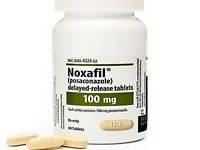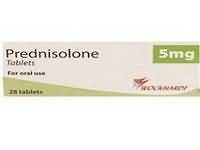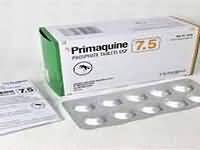Ciclosporin

Ciclosporin
CLINICAL USE
Immunosuppressant:Prophylaxis of solid organ transplant rejectionNephrotic syndrome Atopic dermatitis Psoriasis Rheumatoid arthritisDOSE IN NORMAL RENAL FUNCTION
Organ transplantation: Oral: 2–15 mg/kg/day based on levels. —(See local protocol.)IV: One-third to one-half of oral dose. —(See local protocol.)Bone marrow transplantation: Oral: 12.5–15 mg/kg daily —IV: 3–5 mg/kg daily —Nephrotic syndrome: 5 mg/kg orally in 2 divided dosesAtopic dermatitis/psoriasis: 2.5–5 mg/kg orally in 2 divided dosesRheumatoid arthritis: Oral: 2.5–4 mg/kg in 2 divided dosesPHARMACOKINETICS
DOSE IN RENAL IMPAIRMENT
GFR (mL/MIN)
DOSE IN PATIENTS UNDERGOING RENAL REPLACEMENT THERAPIES
IMPORTANT DRUG INTERACTIONS
Potentially hazardous interactions with other drugsIncreased risk of hyperkalaemia with ACE inhibitors, angiotensin-II antagonists, potassium-sparing diuretics, potassium saltsIncreased risk of nephrotoxicity with aciclovir, aminoglycosides, amphotericin, colchicine, co-trimoxazole, disopyramide, foscarnet, melphalan, NSAIDs, polymyxins, quinolones, sulphonamides, thiazide diuretics, trimethoprim and vancomycinIncreased plasma ciclosporin levels with aciclovir, amiodarone, atazanavir, carvedilol, chloramphenicol, chloroquine, cimetidine, clarithromycin, colchicine, danazol, diltiazem, doxycycline, erythromycin, famotidine, fluconazole, fluoxetine, fluvoxamine, glibenclamide, glipizide, grapefruit juice, hydroxychloroquine, itraconazole, ketoconazole, lercanidipine (concentration of both drugs increased – avoid), miconazole, high-dose methylprednisolone, metoclopramide, metronidazole, muromonab-CD3, nelfinavir, nicardipine, nifedipine, posaconazole, progestogens, propafenone, .CiCLosPorin 151quinupristin/dalfopristin, ritonavir, saquinavir (concentration of both drugs increased), tacrolimus, telithromycin, verapamil and voriconazoleDecreased plasma ciclosporin levels with barbiturates, bupropion, carbamazepine, griseofulvin, lanreotide, modafinil, octreotide, phenytoin, primidone, quinine, red wine, rifampicin, St John’s wort, sulfadiazine, IV sulfadimidine, sulfasalazine, sulfinpyrazone, ticlopidine and IV trimethoprimAntibacterials: increased risk of myopathy with daptomycin – try to avoid concomitant useBasiliximab: may alter ciclosporin levels Bosentan: co-administration of ciclosporin and bosentan is contraindicated. When ciclosporin and bosentan are co-administered, initial trough concentrations of bosentan are 30 times higher than normal. At steady state, trough levels are 3–4 times higher than normal. Blood concentrations of ciclosporin decreased by 50%Calcium-channel blockers: increased nifedipine concentration and toxicityCardiac glycosides: increased digoxin concentration and toxicityCasponfungin: caspofungin concentration increased – avoid concomitant useColchicine: risk of myopathy or rhabdomyolysis; also increased blood-ciclosporin concentrations and nephrotoxicityCytotoxics: increased risk of neurotoxicity with doxorubicin; increased toxicity with methotrexate; seizures have been reported in bone marrow transplants taking busulfan and cyclophosphamide; concentration of etoposide possibly increased (increased risk of toxicity); possible interaction with docetaxolLipid-lowering agents: increased risk of myopathy with statins (max dose of simvastatin and atorvastatin should be 10 mg1); avoid with rosuvastatin; increased risk of nephrotoxicity with fenofibrate; bezafibrate may increase creatinine and reduce ciclosporin levels; concentration of both drugs may be increased with ezetimibeMycophenolate mofetil: some studies show that ciclosporin decreases plasma MPA AUC levels – no dose change requiredNSAIDs: diclofenac concentration increased – reduce diclofenac dose. Omeprazole: may alter ciclosporin concentrationOrlistat: absorption of ciclosporin possibly reducedOxcarbazepine: may reduce ciclosporin concentrationPrednisolone: increased prednisolone concentrationSirolimus: increased absorption of sirolimus – give sirolimus 4 hours after ciclosporin; sirolimus concentration increased; long-term concomitant administration may be associated with deterioration in renal functionSitaxentan: concentration of sitaxentan increased – avoid concomitant useTacrolimus: increased tacrolimus concentration and toxicity – avoid concomitant useUrsodeoxycholic acid: unpredictably increased absorption and raised ciclosporin levels in some patientsADMINISTRATION
Reconstition
Dilute 50 mg in 20–100 mL with sodium chloride 0.9% or glucose 5%Route
Oral, IV peripherally or centrallyRate of Administration
Over 2–6 hours peripherally or 1 hour centrallyComments
–OTHER INFORMATION
To convert from IV to oral multiply by 2–3 (usually 2.5). Dose and monitor blood levels in accordance with local protocol
See how to identify renal failure stages according to GFR calculation
See how to diagnose irreversible renal disease
Home








